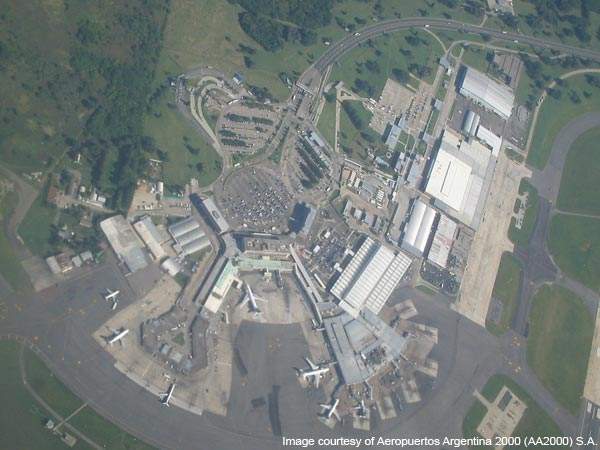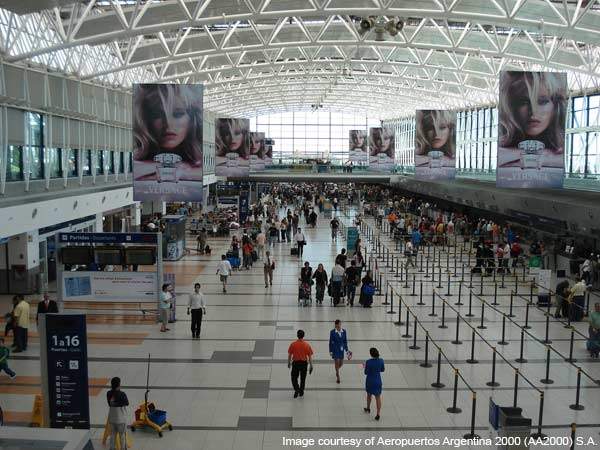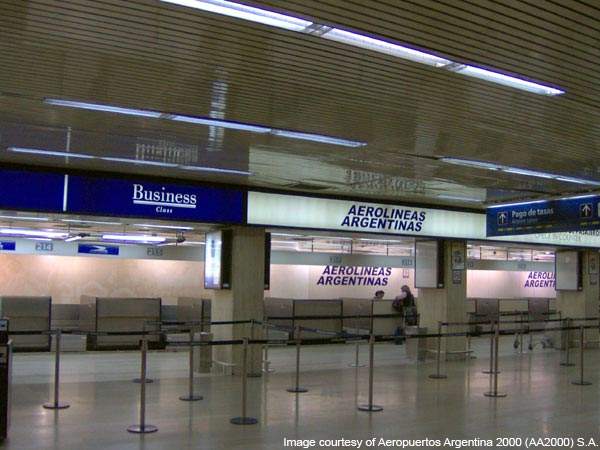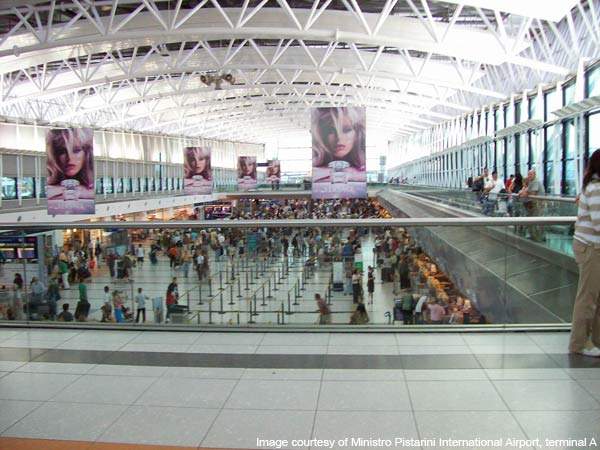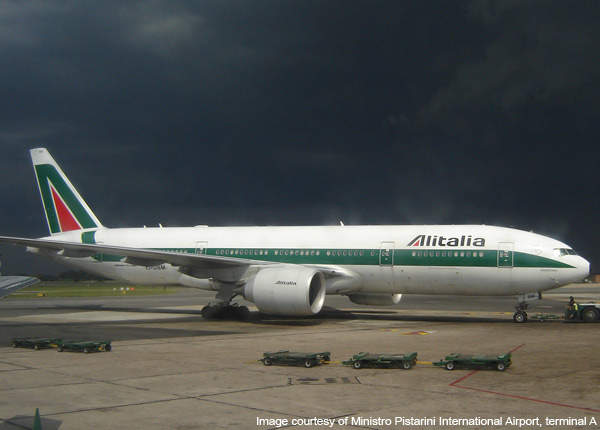Ministro Pistarini International Airport (Aeropuerto Internacional de Ezeiza Ministro Pistarini) is located in Ezeiza city, Buenos Aires, Argentina. It is the largest international airport in Argentina, spread over an area of 3,475ha, lying 22km south-west of the city of Buenos Aires.
The airport was built in 1944 and serves cargo and military air traffic, in addition to international flights. The airport handled over eight million passengers in 2008. Aircraft movements during the year were 71,037 and 205.5t of cargo was handled.
The airport, considered to be the biggest in South America, is owned by the Ministry of Planning and Public Services, which is part of the Argentine government.
The airport was privatised in 1998 under a lease agreement awarded to the current operator of the airport – a consortium by the name of Aeropuertos Argentina 2000 (AA2000) S.A. The consortium consists of Eurnekian (Argentina), Societá Esercizi Aeroportuali, Ogden Corporation (USA), Societá Esercizi Aeroportuali, La Banca Statal Italiana Simest, and Amadeo Riva companies. Access between the airport and the city is through the General Ricchieri Expressway.
In 2007, an expansion programme for Ezeiza airport was proposed by the AA2000 president, with an estimated cost of $250m. Phase I of the expansion project commenced in September 2009, with terminal C at the airport being demolished.
Ministro Pistarini international airport expansion
The Ezeiza airport expansion programme includes the construction of a new 120,000m2 terminal building, an air traffic control tower, new platforms for aircraft and parking spaces for cars.
The first phase of the project includes the construction of a new terminal building for domestic aircraft with an anticipated capacity of 2.5 million passengers a year.
The new terminal is planned to be interconnected with terminal A and both of these buildings will form the basis to accord operations throughout the airport. Terminal A at the airport is planned to be refurbished and new baggage handling belts will also be installed.
An estimated $74m has been invested in this project. The airport is planned to capacitate 13 million passengers a year once finished in 2010-11.
The project is set to use cutting-edge technology throughout the construction of the terminal building, which in turn will enhance the efficiency of the airport.
Another construction project, which includes plans to restore the third runway at the airport and construction of a new 3,000m-long runway, has also been undertaken by the airport authorities. The project is scheduled to be completed by 2010.
Once the expansion of the airport is completed, the airport will have a new terminal building, a new control tower, seven new aircraft parking places and 21 boarding bridges. The airport will also have 4,800 car parking spaces, 200 check-in places and 86 immigration counters. A total investment of $250m is anticipated.
Ministro Pistarini airport terminal features
The airport houses two passenger terminals – terminal A and terminal B – and a cargo terminal C. Terminal B operates domestic flights only. Terminal A is a 130,000ft2 building, which was constructed in 2000, at a cost of $75m. The 65ft-high terminal is column-free and has a wing-shaped roof.
Both terminals A and B have an information desk located on the ground floor. A 24-hour bank is accessible at terminal A, while foreign exchange counters, ATMs, telephones and internet access are located in both terminals. There are several shopping destinations at both the terminals, including duty-free shops.
Terminal A is equipped with a medical service centre and both passenger terminals have pharmacies. Conference and business facilities are also available at both terminals, which also feature VIP lounges.
Ministro Pistarini airport runways
The airport was originally built with three crossing runways with directions 05/23, 11/29 and 17/35 in 1944. The runway 05/23 was closed for usage in 1997 and has been used as a parking place for aircraft since then. The runway 11/29 is 3,300m (10,827ft) in length, while runway 17/35 is 3,105m (10,187ft) long. Both are asphalt surfaced.
The runway 11/29 underwent renovation and was resurfaced and reopened on 19 December 2002. Repaving the runway cost $6.9m.
Ezeiza air traffic control tower
The air traffic control tower (ATC) at Ezeiza airport was upgraded in 2002, which included new installations. The equipment for the ATC’s installations was provided by Lockheed Martin, Rohde & Schwarz and Frequentis.
The new equipment encompassed a system that connects five radar sets across the country and one radar in Uruguay. Known as the ‘skyline system’, it obtains information from the six radar sets, processes it on an integrated platform and thereby manages the aircraft in an efficient and safe manner. A new ultra-modern voice communication / audio management system was also installed at the ATC.
Ezeiza airport car parking
The airport houses an open-air parking facility as well as multi-storey car park. Both are situated next to terminal A. Long-term and short-term car parking is located in the same place at the airport.

